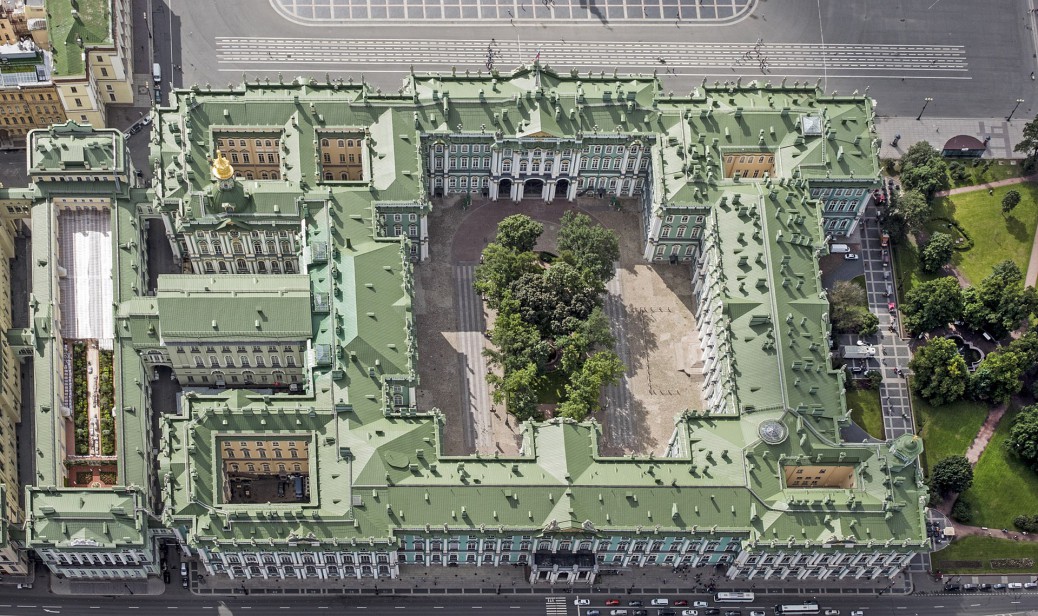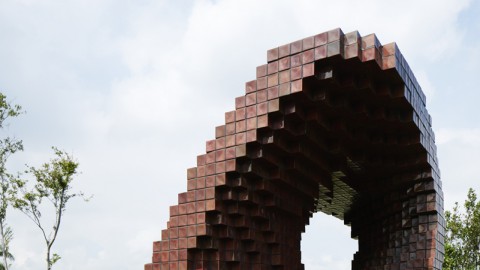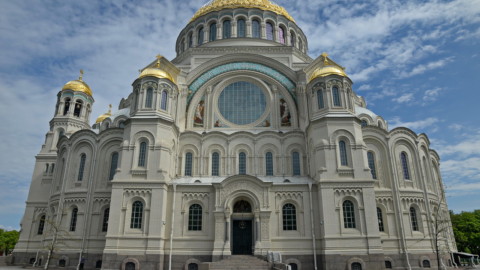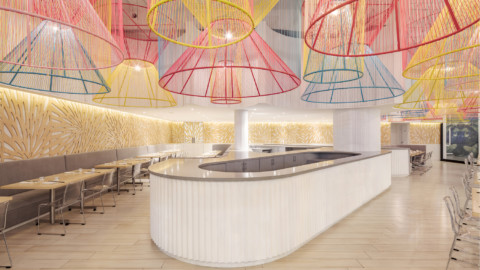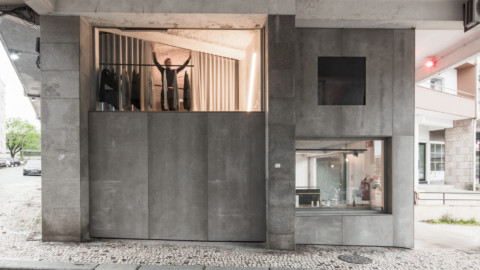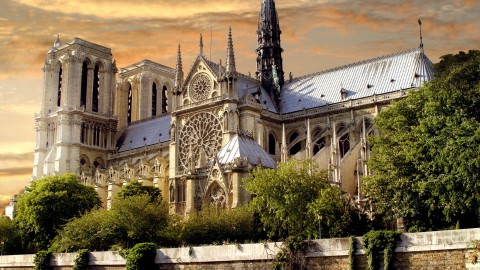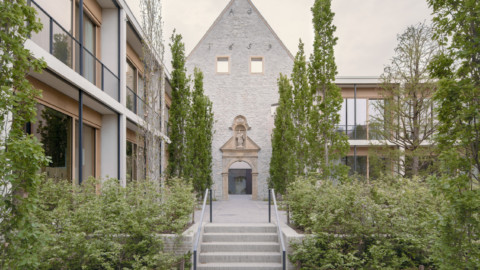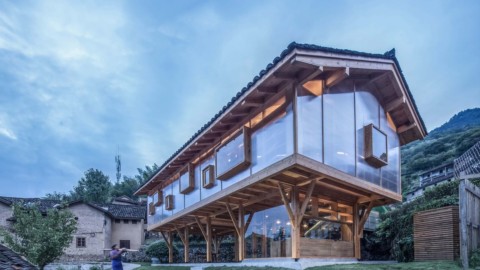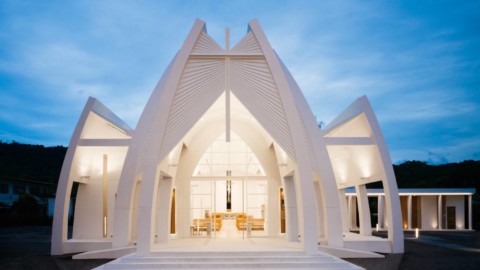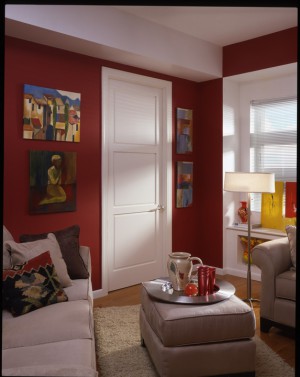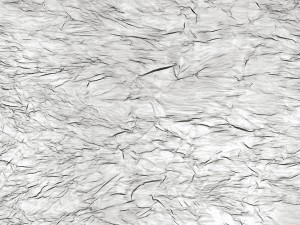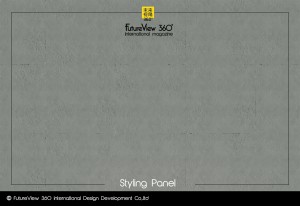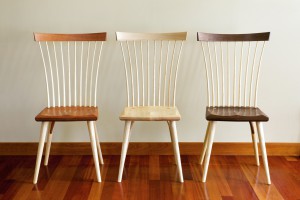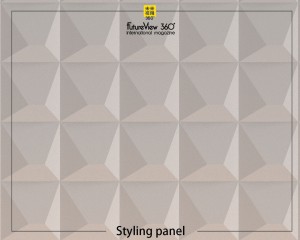Winter Palace 冬宮
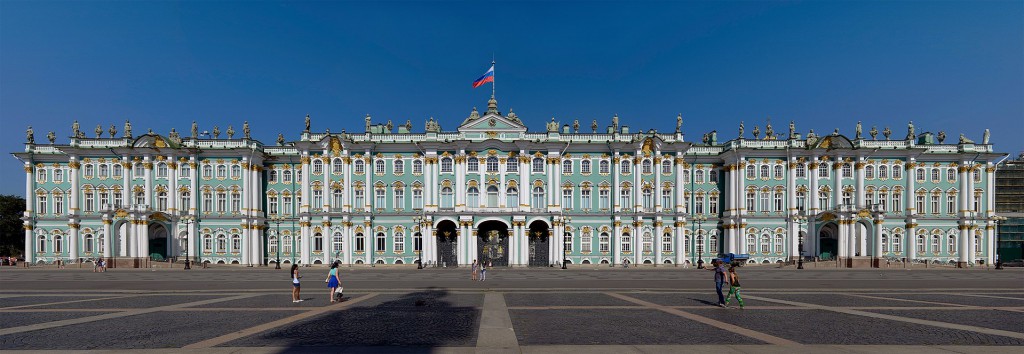
The Winter Palace (Russian: Зимний дворец, tr. Zimnij dvorets, IPA: [ˈzʲimnʲɪj dvɐˈrʲɛts]) was the official residence of the Russian Emperors from 1732 to 1917. Today, the palace and its precincts form the Hermitage Museum. Situated between Palace Embankment and Palace Square, in Saint Petersburg, adjacent to the site of Peter the Great’s original Winter Palace, the present and fourth Winter Palace was built and altered almost continuously between the late 1730s and 1837, when it was severely damaged by fire and immediately rebuilt. The storming of the palace in 1917, as depicted in Soviet paintings and Sergei Eisenstein’s 1927 film October, became an iconic symbol of the Russian Revolution.
The palace was constructed on a monumental scale that was intended to reflect the might and power of Imperial Russia. From the palace, the Tsar ruled over 22,400,000 square kilometers (8,600,000 sq mi) (almost 1/6 of the Earth’s landmass) and over 125 million subjects by the end of the 19th century. It was designed by many architects, most notably Bartolomeo Rastrelli, in what came to be known as the Elizabethan Baroque style. The green-and-white palace has the shape of an elongated rectangle, and its principal façade is 215 metres (705 ft) long and 30 m (98 ft) high. The Winter Palace has been calculated to contain 1,786 doors, 1,945 windows, 1,500 rooms and 117 staircases. Following a serious fire, the palace’s rebuilding of 1837 left the exterior unchanged, but large parts of the interior were redesigned in a variety of tastes and styles, leading the palace to be described as a “19th-century palace inspired by a model in Rococo style”.
In 1905, the Bloody Sunday massacre occurred when demonstrators marched toward the Winter Palace, but by this time the Imperial Family had chosen to live in the more secure and secluded Alexander Palace at Tsarskoe Selo, and returned to the Winter Palace only for formal and state occasions. Following the February Revolution of 1917, the palace was for a short time the seat of the Russian Provisional Government, led by Alexander Kerensky. Later that same year, the palace was stormed by a detachment of Red Army soldiers and sailors—a defining moment in the birth of the Soviet state.
冬宮(俄語:Зимнийдворец,tr.Zimnij dvorets,IPA:[zʲimnʲɪjdvɐrʲɛts])是1732年至1917年俄羅斯皇帝的官邸。今天,宮殿及其轄區形成了冬宮博物館。位於聖彼得堡的Palace Embankment宮殿和宮殿廣場之間,毗鄰彼得大帝的原始冬宮,現在和第四個冬宮在1730年代末至1837年之間幾乎不間斷地建造和改造,當時它被火災嚴重損壞並立即重建。如蘇聯繪畫和謝爾蓋愛森斯坦1927年的電影10月所描繪的那樣,1917年的宮殿風暴成為俄羅斯革命的標誌性象徵。
宮殿的建造規模很大,旨在反映帝國俄羅斯的威力和力量。從宮殿開始,到19世紀末,沙皇統計了22,400,000平方公里(8,600,000平方英里)(幾乎佔地球陸地面積的1/6)和超過1.25億科目。它由許多建築師設計,最著名的是Bartolomeo Rastrelli,後來被稱為伊麗莎白時代的巴洛克風格。綠白宮殿的形狀為細長的矩形,其主要外觀長215米(705英尺),高30米(98英尺)。冬宮計算包含1,786個門,1,945個窗戶,1,500個房間和117個樓梯。在嚴重火災之後,宮殿重建1837年,外觀保持不變,但內部的大部分區域經過重新設計,具有各種口味和風格,使宮殿被描述為“受洛可可模型啟發的19世紀宮殿”樣式”。
1905年,當示威者向冬宮遊行時發生了血腥的星期天大屠殺,但此時帝國家庭選擇住在Tsarskoe Selo更加安全和隱蔽的亞歷山大宮殿,並返回冬宮只為正式和州場合。繼1917年二月革命之後,宮殿在短時間內成為由亞歷山大·克倫斯基領導的俄羅斯臨時政府所在地。同年晚些時候,這座宮殿被一支紅軍士兵和水手分隊襲擊 – 這是蘇維埃國家誕生的決定性時刻。
As completed, the overriding exterior form of the Winter Palace’s architecture, with its decoration in the form of statuary and opulent stucco work on the pediments above façades and windows, is Baroque. The exterior has remained as finished during the reign of Empress Elizabeth. The principal façades, those facing the Palace Square and the Neva river, have always been accessible and visible to the public. Only the lateral façades are hidden behind granite walls, concealing a garden created during the reign of Nicholas II. The building was conceived as a town palace, rather than a private palace within a park, such as that of the French kings at Versailles.
The architectural theme continues throughout the interior of the palace. The first floor, being the piano nobile, is distinguished by windows taller than those of the floors above and below. Each window is divided from its neighbour by a pilaster. The repetitive monotony of the long elevations is broken only by symmetrically placed slightly projecting bays, many with their own small portico. This theme has been constant during all subsequent rebuilding and alterations to the palace. The only external changes have been in colour: at various times in its history the palace has been painted different shades. In the eighteenth century, the palace was painted straw yellow with white and gilded ornament. Under Nicholas I in 1837, it was painted a dull red, which it remained through the revolution and early Soviet period. Following the restoration work after World War II, it was painted green with the ornament depicted in white, the standard Soviet color scheme for Baroque buildings. (The Stroganov Palace, for example, was also green and white in this period.)
Internally, the palace appears as a combination of the Baroque and the Neoclassical. Little of Rastrelli’s rococo interior design has survived; only the Jordan Staircase and the Grand Church remain in their original style. The changes to the interior were largely due to the influences of the architects employed by Catherine the Great in the last years of her life, Starov and Quarenghi, who began to alter much of the interior of the palace as designed by Rastrelli. Catherine always wanted the latest fashions, and during her reign the more severe neoclassical architectural influences, fashionable in Western Europe from the late 1760s, slowly crept towards Saint Petersburg. The neoclassical interiors were further emphasised and extended during the reign of Catherine’s grandson, Nicholas I.
Quarenghi is credited with introducing the Neoclassical style to Saint Petersburg. His work, together with that of Karl Ivanovich Rossi and Auguste de Montferrand, gradually transformed Saint Petersburg into an “Empire Town”. Montferrand not only created some of the palace’s greatest neoclassical interiors, but also was responsible for the erection of the Column of Alexander during the reign of Nicholas I in Rossi’s newly designed Palace Square.
For a long time the Winter Palace was the tallest edifice in the city. In 1844, Nicholas I gave the orders to the effect that private houses should be at least 1 sazhen (2.13 m) lower than the Winter Palace. This rule was effective until 1905.
完成後,冬宮的建築的最重要的外部形式,其裝飾形式的雕像和華麗的灰泥在外牆和窗戶上方的山牆上工作,是巴洛克風格。在伊麗莎白女皇統治期間,外觀一直保持完整。面向宮殿廣場和涅瓦河的主要外牆一直是公眾可以看到的。只有側面立面隱藏在花崗岩牆後面,隱藏了尼古拉斯二世統治時期創建的花園。該建築被設想為城鎮宮殿,而不是公園內的私人宮殿,如凡爾賽宮的法國國王。
建築主題貫穿整個宮殿內部。第一層是鋼琴金釵,其特點是窗戶高於上下樓層。每個窗口都用一個壁柱與鄰居隔開。長高程的重複單調只能通過對稱放置的略微突出的海灣來打破,許多都有自己的小門廊。在隨後的重建和改建宮殿期間,這個主題一直不變。唯一的外部變化是彩色的:在其歷史的不同時期,宮殿被塗成了不同的色調。在十八世紀,宮殿被漆成稻草黃色與白色和鍍金裝飾。在1837年的尼古拉斯一世(Nicholas I)之下,它被描繪成一種暗紅色,它在革命和早期蘇聯時期留下。在第二次世界大戰後的修復工作之後,它被塗成了綠色,裝飾用白色描繪,這是巴洛克式建築的標準蘇聯色彩方案。 (例如,斯特羅加諾夫宮在此期間也是綠色和白色。)
在內部,宮殿看起來像巴洛克和新古典主義的結合。 Rastrelli的洛可可室內設計很少倖存下來;只有喬丹樓梯和大教堂保持原有的風格。內部的變化主要是由於凱瑟琳大帝在她生命的最後幾年所採用的建築師的影響,Starov和Quarenghi,他們開始改變由Rastrelli設計的宮殿內部的大部分內部。凱瑟琳總是想要最新的時裝,而在她統治時期,更為嚴重的新古典主義建築影響,從1760年代後期開始在西歐流行,逐漸向聖彼得堡方向蔓延。在凱瑟琳的孫子尼古拉斯一世統治時期,新古典主義的內飾得到了進一步的強調和延伸。
Quarenghi因將新古典主義風格引入聖彼得堡而備受讚譽。他的作品與卡爾·伊万諾維奇·羅西和奧古斯特·德蒙特弗蘭德的作品一起,逐漸將聖彼得堡變成了“帝國城”。 Montferrand不僅創造了一些宮殿最偉大的新古典主義內飾,而且還負責在羅西新設計的宮殿廣場的尼古拉斯一世統治期間建立亞歷山大柱。
很長一段時間,冬宮是這座城市最高的建築。 1844年,尼古拉斯一世發布命令,規定私人住宅應至少比冬宮低一點(2.13米)。這條規則有效期至1905年。

Interior
The Winter Palace is said to contain 1,500 rooms, 1,786 doors and 1,945 windows. The principal façade is 500 ft (150 m) long and 100 ft (30 m) high. The ground floor contained mostly bureaucratic and domestic offices, while the second floor was given over to apartments for senior courtiers and high-ranking officials. The principal rooms and living quarters of the Imperial Family are on the first floor, the piano nobile. The great state rooms, used by the court, are arranged in two enfilades, from the top of the Jordan Staircase. The original Baroque suite of the Tsaritsa Elizabeth running west, fronting the Neva, was completely redesigned in 1790–93 by Giacomo Quarenghi. He transformed the original enfilade of five state rooms into a suite of three vast halls, decorated with faux marble columns, bas-reliefs and statuary.
A second suite of state rooms running south to the Great Church was created for Catherine II. Between 1787–95, Quarenghi added a new eastern wing to this suite which contained the great throne room, known as St George’s Hall (13), which linked the Winter Palace to Catherine’s less formal palace, the Hermitage, next door. This suite was altered in the 1820s when the Military Gallery (11) was created from a series of small rooms, to celebrate the defeat of Napoleon. This gallery, which had been conceived by Alexander I, was designed by Carlo Rossi and was built between June and November 1826 under Nicolas I; it was inaugurated on 25 October 1826. For the 1812 Gallery, the Tsar commissioned 332 portraits of the generals instrumental in the defeat of France. The artist was the Briton George Dawe, who received assistance from Alexander Polyakov and Wilhelm August Golicke.
Nicholas I was also responsible for the creation of the Battle Galleries (19), which occupy the central portion of the Palace Square façade. They were redesigned by Alexander Briullov to commemorate the Russian victories prior to 1812. Immediately adjacent to these galleries celebrating the French defeat, were rooms (18) where Maximilian, Duke of Leuchtenberg, Napoleon’s step-grandson and the Tsar’s son-in-law, lived during the early days of his marriage.
內部
據說冬宮有1,500個房間,1,786個門和1,945個窗戶。主立面長500英尺(150米),高100英尺(30米)。一樓大部分都是官僚和國內辦公室,而二樓則是高級朝臣和高級官員的公寓。帝國家庭的主要房間和生活區位於一樓,鋼琴金釵。法院使用的大型房間從喬丹樓梯的頂部排列成兩個enfilades。位於西邊的Tsaritsa Elizabeth原始的巴洛克式套房正面向涅瓦河,由Giacomo Quarenghi於1790-93完全重新設計。他將五間國家房間的原始建築改造成了一個由三個巨大的大廳組成的套房,裝飾著人造大理石柱,淺浮雕和雕像。
為凱瑟琳二世(Catherine II)創建了第二套向南大教堂(Great Church)南部的州政廳。在1787-95之間,Quarenghi在這間套房中增加了一個新的東翼,其中包含著名的聖喬治大廳(13),它將冬宮與隔壁的凱瑟琳不太正式的宮殿 – 冬宮相連。這個套房在19世紀20年代被改變,當時軍事畫廊(11)是從一系列小房間創建的,以慶祝拿破崙的失敗。這個畫廊由亞歷山大一世構思,由卡羅羅西設計,於1826年6月至11月在尼古拉斯一世建造;它於1826年10月25日落成。對於1812年的畫廊,沙皇委託332名將軍的肖像畫作為法國的失敗。這位藝術家是英國人喬治·達維,他接受了亞歷山大·波利亞科夫和威廉·奧古斯特·戈利克的幫助。
尼古拉斯一世還負責創建戰鬥畫廊(19),佔據宮殿廣場外觀的中央部分。亞歷山大·布里洛夫(Alexander Briullov)為了紀念1812年之前的俄羅斯勝利而對其進行了重新設計。緊鄰這些畫廊慶祝法國人的失敗,就是房間(18),馬克西米利安,拿破崙公爵的繼孫,拿破崙的繼孫和沙皇的女婿,在他結婚的早期生活。
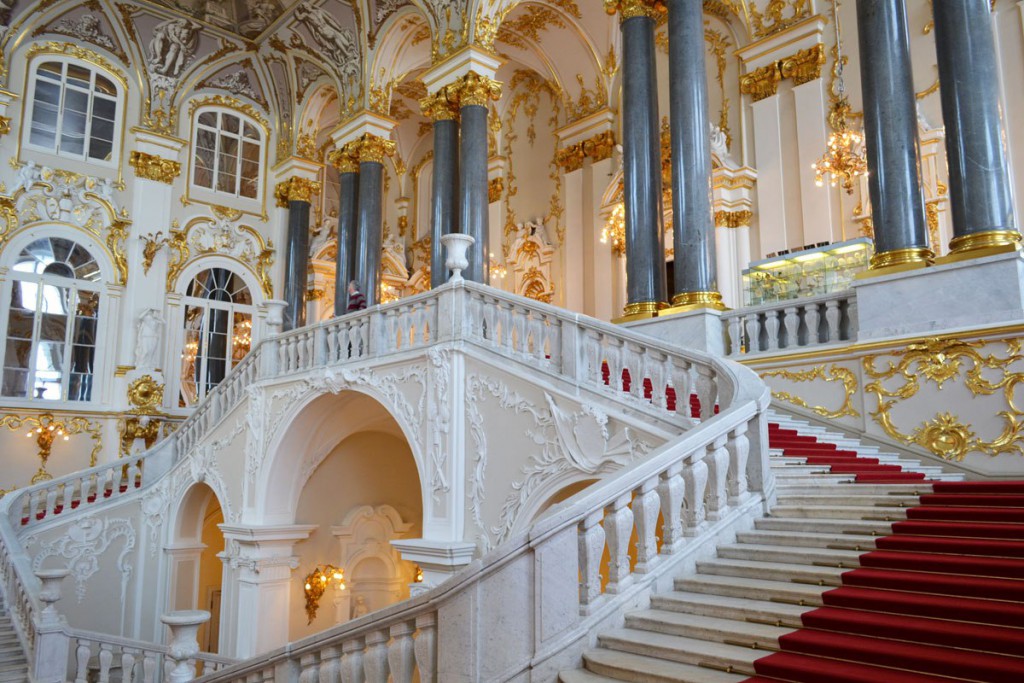
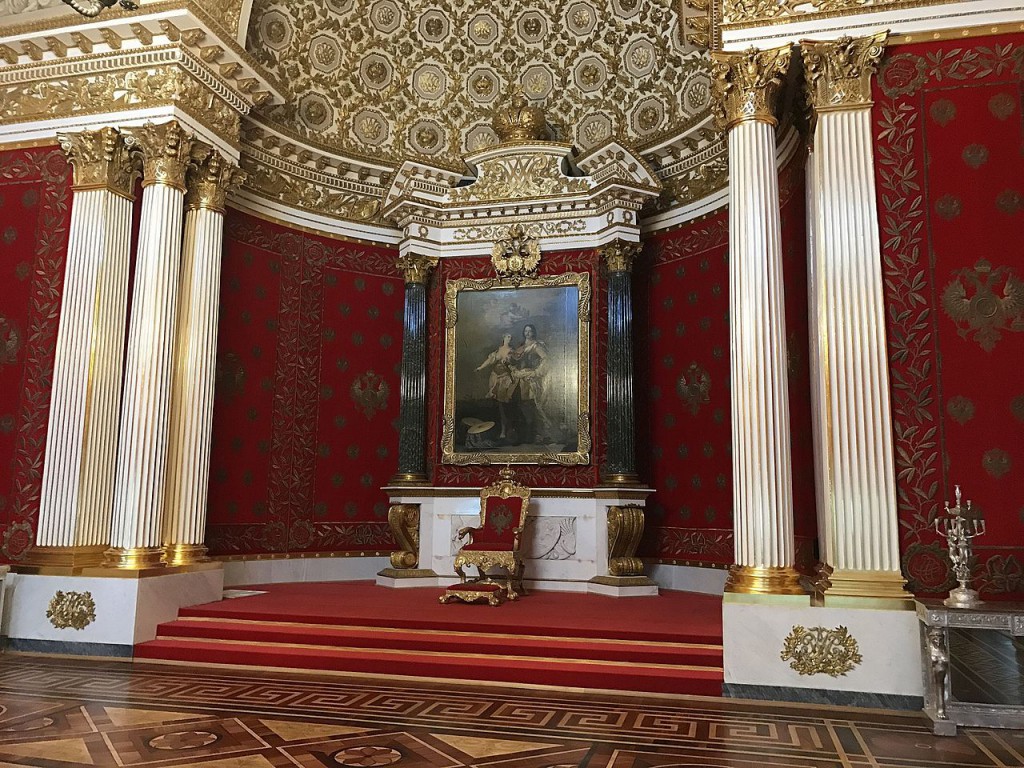
Fire of 1837
In 1833, de Montferrand was hired to redesign the eastern state rooms and create the Field Marshal’s Hall and the Small Throne Room (9 & 10). In 1837, a fire broke out. Its cause is unknown, but its spread is blamed on de Montferrand. The architect was being hurried by the Tsar for an early completion, so he used wooden materials where stone would have been better. Additionally, between the hurriedly built wooden partition walls disused fireplaces were concealed; their chimneys, coupled with the narrow ventilation shafts, acted as flues for the fire, allowing it to spread undetected between the walls from room to room until it was too late to extinguish.
Once detected, the fire continued to spread, but slowly enough that the palace guards and staff were able to rescue many of the contents, depositing them in the snow in Palace Square. This was no mean feat, as the treasures of the Winter Palace were always heavy furniture and fragile ornaments rather than lighter paintings. To create a firebreak, the Tsar ordered the destruction of the three passages leading to the Hermitage, a fortunate act which saved the building and the huge art collection. The Russian poet Vasily Zhukovsky witnessed the conflagration—”a vast bonfire with flames reaching the sky.” The fire burned for several days, and destroyed most of the Winter Palace’s interior.
Seeming to ignore the size of the palace, the Tsar ordered that the rebuilding be completed within a year. The Marquis de Custine described the “unheard of efforts” that were necessary to facilitate this. “During the great frosts 6000 workmen were continually employed; of these a considerable number died daily, but the victims were instantly replaced by other champions brought forward to perish.” The work was supervised by Pyotr Kleinmichel, who had already gained a reputation for ruthlessness when serving in the military settlements under Arakcheev.
The rebuilding of the palace took advantage of the latest construction techniques of the industrial age. The roof was supported by a metal framework, while the spans of ceilings in the great halls were supported by iron girders. Following the fire, the exterior, most of the principal state suites, the Jordan staircase and the Grand Church were restored to their original design and decoration by the architect Vasily Stasov. Some of the rooms, such as the second largest room in the Winter Palace, the Armorial Hall, became far more ornate, however, with a heavy use of gilt. The smaller and more private rooms of the palace were altered and decorated in various 19th-century contemporary styles by Alexander Briullov according to whims and fashion of their intended occupants, ranging from Gothic to rococo. The Tsarevna’s crimson boudoir (23), in the private Imperial apartments, was a faithful reproduction of the rococo style, which Catherine II and her architects started to eliminate from the palace less than 50 years earlier. One of the palace’s most notable rooms was created as a result of the fire when the Jasper Room, which had been destroyed, was rebuilt as the Malachite Drawing Room, the principal reception room of the Tsaritsa’s suite. The Tsar himself, for all the grandeur he created in his palaces, loved the greatest simplicity. His bedroom at the Winter Palace was spartan, with no ornaments save for some maps and an icon, and he slept on a camp bed with a straw mattress.
1837年的火災
1833年,de Montferrand被聘請重新設計東部的國家房間,並建立了元帥的大廳和小王座室(9和10)。 1837年,一場火災爆發。它的原因不明,但其傳播歸咎於德蒙特弗蘭德。建築師被沙皇匆匆趕到早期完工,所以他用的是木材,石頭本來就更好。此外,在匆匆建造的木質隔斷牆之間,廢棄的壁爐被隱藏起來;他們的煙囪,加上狹窄的通風井,起到了火焰的作用,使它能夠在一個房間之間的牆壁之間不被發現,直到熄滅為時已晚。
一旦被發現,火勢繼續蔓延,但緩慢到足以使宮廷衛兵和工作人員能夠拯救許多內容,將它們存放在宮殿廣場的雪中。這絕非易事,因為冬宮的寶藏總是重型家具和脆弱的裝飾品,而不是較輕的畫作。為了製造一個防火牆,沙皇命令破壞通往冬宮的三個通道,這是一個幸運的行為,拯救了建築和巨大的藝術收藏品。俄羅斯詩人瓦西里·朱可夫斯基(Vasily Zhukovsky)目睹了這場大火 – “火焰到達天空的巨大篝火”。大火燒了幾天,摧毀了冬宮的大部分內部。
沙皇似乎無視宮殿的大小,下令重建工作在一年內完成。侯爵侯爵描述了促進這一點所必需的“聞所未聞的努力”。 “在大霜期間,6000名工人不斷受僱;其中有相當數量的人每天死亡,但受害者立即被其他提出要滅亡的冠軍所取代。”這項工作由彼得·克萊因米爾(Pyotr Kleinmichel)監督,他在阿拉克切耶夫(Arakcheev)的軍事定居點服役時已經因無情而聞名。
宮殿的重建利用了工業時代的最新建築技術。屋頂由金屬框架支撐,而大廳中的天花板跨度由鐵樑支撐。火災發生後,建築師瓦西里·斯塔索夫(Vasily Stasov)將大部分主要的州立套房,喬丹樓梯和大教堂恢復了原有的設計和裝飾。一些房間,例如冬宮的第二大房間,Armorial Hall,變得更加華麗,但是大量使用鍍金。宮殿的較小和更私人的房間由亞歷山大·布里洛夫(Alexander Briullov)根據他們想要的居住者的奇想和時尚(從哥特式到洛可可式)改變和裝飾各種19世紀的現代風格。 Tsarevna的深紅色閨房(23)位於私人皇家公寓內,是對洛可可式風格的忠實再現,凱瑟琳二世和她的建築師在不到50年前開始從宮殿中消失。宮殿最著名的房間之一是由於火災造成的,當被摧毀的賈斯珀房間被重建為孔雀石套房的主要接待室 – 孔雀石繪畫室。沙皇本人,因為他在宮殿中創造的所有宏偉,都喜歡最大的簡約。他在冬宮的臥室很簡陋,除了一些地圖和圖標外沒有任何裝飾品,他睡在帶有草蓆的露營床上。
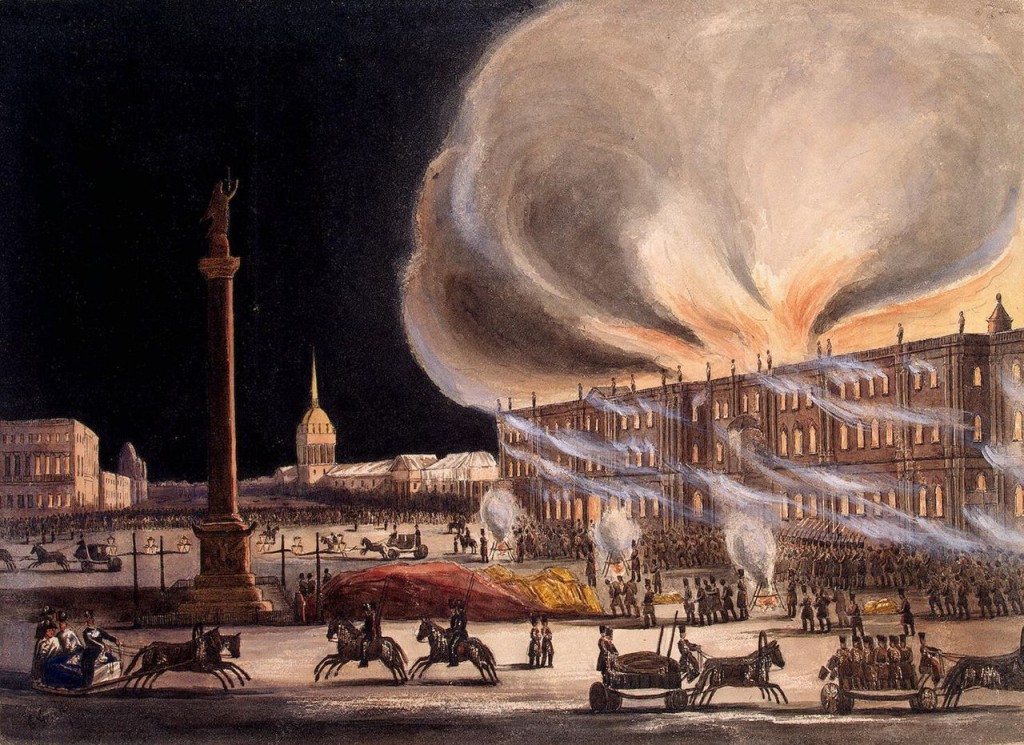
FROM:https://en.wikipedia.org/wiki/Winter_Palace
FROM:The Winter Palace through the Ages
FROM:Saint Petersburg City Guide: Winter Palace -Travel & Discover
Don’t you think it’s addictive?
Want to know more about the beauty of architecture?
Come and join our members to explore the beauty of architectural design.
覺得看得不過癮嗎?
想要知道更多建築之美嗎?
快來加入我們的會員,一同探索建築設計之美。
The above article is purely for appreciation and sharing purposes, as well as the construction of new technology and the public can be in-depth understanding of the information at the same time there are sources, will be able to query, no use of the document as a commercial transaction, if illegal, please inform the We will immediately remove the site, thank you for cooperation.
以上文章純粹作為欣賞及分享用途,以及將建築新型技術傳遞給與大眾能夠深入了解,同時資料還有來源,將可查詢,絕無使用該文件資料作為商業交易行為,如有違法請務必告知該網站我們將立即處理撤除,謝謝合作。

